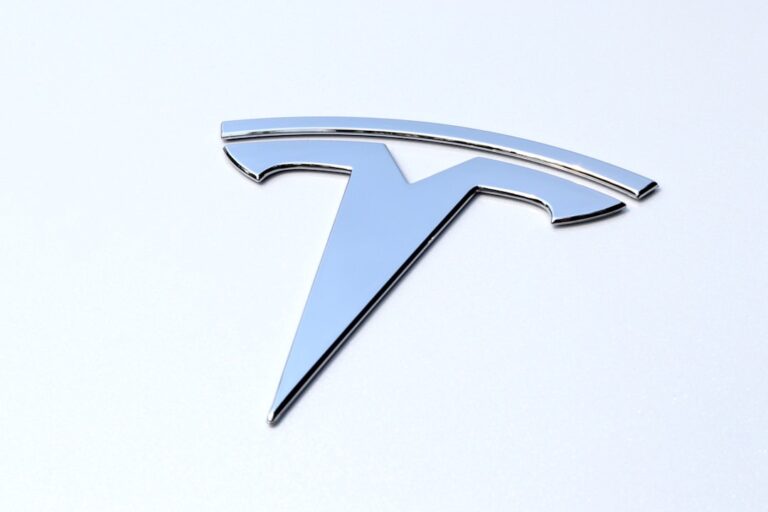
**Title: Tesla’s International Market Share: A Comprehensive Analysis** **
Tesla, Inc., the electric vehicle (EV) pioneer founded by Elon Musk, has made significant strides in the global automotive market.
The company’s innovative approach to electric vehicles, coupled with its commitment to renewable energy solutions, has positioned it as a leader in the EV sector.
This article delves into Tesla’s market share across various regions, examining its performance in Europe, China, and North America while also considering the factors that contribute to its success and the challenges it faces. The global automotive landscape is rapidly evolving, with traditional automakers increasingly pivoting towards electric mobility. Tesla’s ability to capture a significant portion of the market is not merely a result of its cutting-edge technology but also its strategic positioning in key international markets.
Understanding Tesla’s market share dynamics is crucial for stakeholders looking to navigate the complexities of the automotive industry in the coming years. **
Tesla’s Market Share in Europe**
Market Share and Sales
Recent reports indicate that Tesla’s market share in Europe reached approximately 20% in 2022, making it one of the top-selling electric car brands on the continent.
Key Factors Contributing to Success
The European market is characterized by stringent emissions regulations and a growing consumer preference for sustainable transportation options, both of which have played to Tesla’s advantage. The company’s success in Europe can be attributed to several factors, including its extensive Supercharger network and localized production capabilities. The Gigafactory in Berlin, which began operations in early 2022, has significantly reduced delivery times and costs for European customers.
A Strategic Move Aligning with EU Climate Goals
This strategic move not only enhances Tesla’s competitiveness but also aligns with the European Union’s ambitious climate goals. As more consumers transition to electric vehicles, Tesla’s presence in Europe is expected to strengthen further, solidifying its position as a market leader.
Key Takeaways
- Tesla has been steadily increasing its international market share, with a strong presence in Europe, China, and North America.
- In Europe, Tesla has become a leading player in the electric vehicle market, with a significant market share in countries like Norway and the Netherlands.
- In China, Tesla has been gaining traction and has seen a rapid increase in market share, despite facing competition from local electric vehicle manufacturers.
- In North America, Tesla has established itself as a dominant force in the electric vehicle market, with a strong market share in the United States and Canada.
- Factors contributing to Tesla’s international market share include its innovative technology, brand appeal, and a growing demand for sustainable transportation options.
Tesla’s Market Share in China**

China represents one of the most critical markets for Tesla, accounting for a significant portion of its global sales. The country is the largest EV market in the world, with a rapidly growing consumer base eager for electric vehicles. In 2022, Tesla’s market share in China was reported to be around 15%, making it one of the top-selling foreign brands in the region.
The Model 3 and Model Y have been particularly popular among Chinese consumers, thanks to their advanced technology and competitive pricing. Tesla’s success in China can be attributed to its strategic partnerships and localized manufacturing efforts. The Shanghai Gigafactory has allowed Tesla to produce vehicles at scale while benefiting from lower production costs.
Additionally, the Chinese government’s support for electric vehicles through subsidies and incentives has further bolstered Tesla’s sales. However, competition is intensifying as domestic manufacturers like BYD and NIO ramp up their offerings, challenging Tesla’s dominance in this lucrative market. ** The relevant word to link is “Shanghai Gigafactory”.
Here is the link to the official Tesla website for the Shanghai Gigafactory: Shanghai Gigafactory
Tesla’s Market Share in North America**
| Year | Tesla’s Market Share in North America |
|---|---|
| 2016 | 0.3% |
| 2017 | 0.6% |
| 2018 | 1.3% |
| 2019 | 1.8% |
| 2020 | 2.3% |
In North America, Tesla continues to lead the electric vehicle market with an impressive share that hovers around 60%. The company’s strong brand recognition and loyal customer base have contributed to its sustained success in this region. The Model 3 remains one of the best-selling electric cars in the United States, while the Model Y has quickly gained traction since its launch.
As consumers increasingly prioritize sustainability and innovation, Tesla’s position as a market leader appears secure. The North American market is also characterized by a growing network of charging infrastructure, which has been instrumental in alleviating range anxiety among potential EV buyers. Tesla’s Supercharger network is one of the most extensive in the country, providing convenient charging options for its customers.
Furthermore, ongoing investments in battery technology and autonomous driving capabilities are expected to enhance Tesla’s appeal among North American consumers, ensuring that it remains at the forefront of the EV revolution. **
Factors Contributing to Tesla’s International Market Share**
Several factors contribute to Tesla’s impressive international market share. First and foremost is its commitment to innovation and technology. Tesla has consistently pushed the boundaries of what is possible in electric vehicle design and performance.
From advanced battery technology to cutting-edge software updates that enhance vehicle functionality, Tesla has set itself apart from traditional automakers. Another critical factor is Tesla’s brand image. The company has cultivated a reputation for being at the forefront of sustainability and technological advancement.
This image resonates with environmentally conscious consumers who are increasingly seeking alternatives to fossil fuel-powered vehicles. Additionally, Tesla’s direct-to-consumer sales model allows for a more personalized buying experience, further enhancing customer loyalty. **
Challenges Facing Tesla’s International Market Share**

Despite its successes, Tesla faces several challenges that could impact its international market share. One significant hurdle is increasing competition from both established automakers and new entrants into the EV space. As more companies invest in electric vehicle technology, consumers will have a wider array of options to choose from, potentially eroding Tesla’s market dominance.
Supply chain disruptions have also posed challenges for Tesla. The global semiconductor shortage has affected production timelines and delivery schedules, leading to delays that could frustrate customers and impact sales. Additionally, geopolitical tensions and trade policies may complicate Tesla’s operations in certain markets, particularly as it seeks to expand its footprint globally.
**
Future Outlook for Tesla’s International Market Share**
Looking ahead, the future outlook for Tesla’s international market share appears promising but not without uncertainties. Analysts predict that as global demand for electric vehicles continues to rise, Tesla will likely maintain a strong position in key markets such as Europe and North America. The company’s ongoing investments in research and development are expected to yield new innovations that will keep it competitive.
However, Tesla must remain vigilant in addressing challenges such as supply chain issues and increasing competition. The company’s ability to adapt to changing market dynamics will be crucial in sustaining its growth trajectory. Furthermore, expanding its presence in emerging markets could provide new opportunities for growth as more consumers worldwide embrace electric mobility.
**
Conclusion and Implications for Tesla’s International Market Share**
In conclusion, Tesla’s international market share reflects its status as a leader in the electric vehicle industry. With strong performances in Europe, China, and North America, the company has successfully navigated various challenges while capitalizing on opportunities for growth. As competition intensifies and consumer preferences evolve, Tesla must continue to innovate and adapt to maintain its position at the forefront of the EV revolution.
The implications of Tesla’s market share extend beyond just financial performance; they also influence broader trends in sustainability and transportation. As more consumers choose electric vehicles, the automotive industry will likely undergo significant transformations that prioritize environmental responsibility and technological advancement.
— **Keywords:** Tesla international market share, electric vehicle market Europe, China EV market share, North America electric vehicles, factors influencing Tesla sales **Further Reading:**
1. [Tesla’s Global Expansion Strategy](https://www.tesla.com)
2. [Electric Vehicle Market Trends](https://www.ieee.org)
3.
[Challenges Facing Electric Vehicle Manufacturers](https://www.forbes.com)
In a recent analysis of Tesla’s international market share, it was found that the company’s success is largely attributed to its innovative approach to electric vehicles. However, some investors are calling for new leadership at Tesla despite its reputation for producing some of the best EVs on the market. According to this article, the need for new leadership at Tesla is becoming increasingly apparent as the company faces challenges in maintaining its market share.
Click for the latest Tesla products ready to ship right now!
FAQs
What is Tesla’s current international market share?
As of 2021, Tesla’s international market share is estimated to be around 16% of the global electric vehicle market.
Which countries contribute the most to Tesla’s international market share?
The United States, China, and several European countries such as Norway, the Netherlands, and Germany are the major contributors to Tesla’s international market share.
How does Tesla’s international market share compare to other electric vehicle manufacturers?
Tesla’s international market share is higher than most other electric vehicle manufacturers, making it a dominant player in the global electric vehicle market.
What factors have contributed to Tesla’s international market share growth?
Factors such as the popularity of Tesla’s electric vehicles, the company’s strong brand image, innovative technology, and expanding charging infrastructure have all contributed to Tesla’s international market share growth.
What are the challenges for Tesla in maintaining and growing its international market share?
Challenges for Tesla in maintaining and growing its international market share include increasing competition from other electric vehicle manufacturers, regulatory hurdles in different countries, and the need to continuously innovate and improve its products and services.
